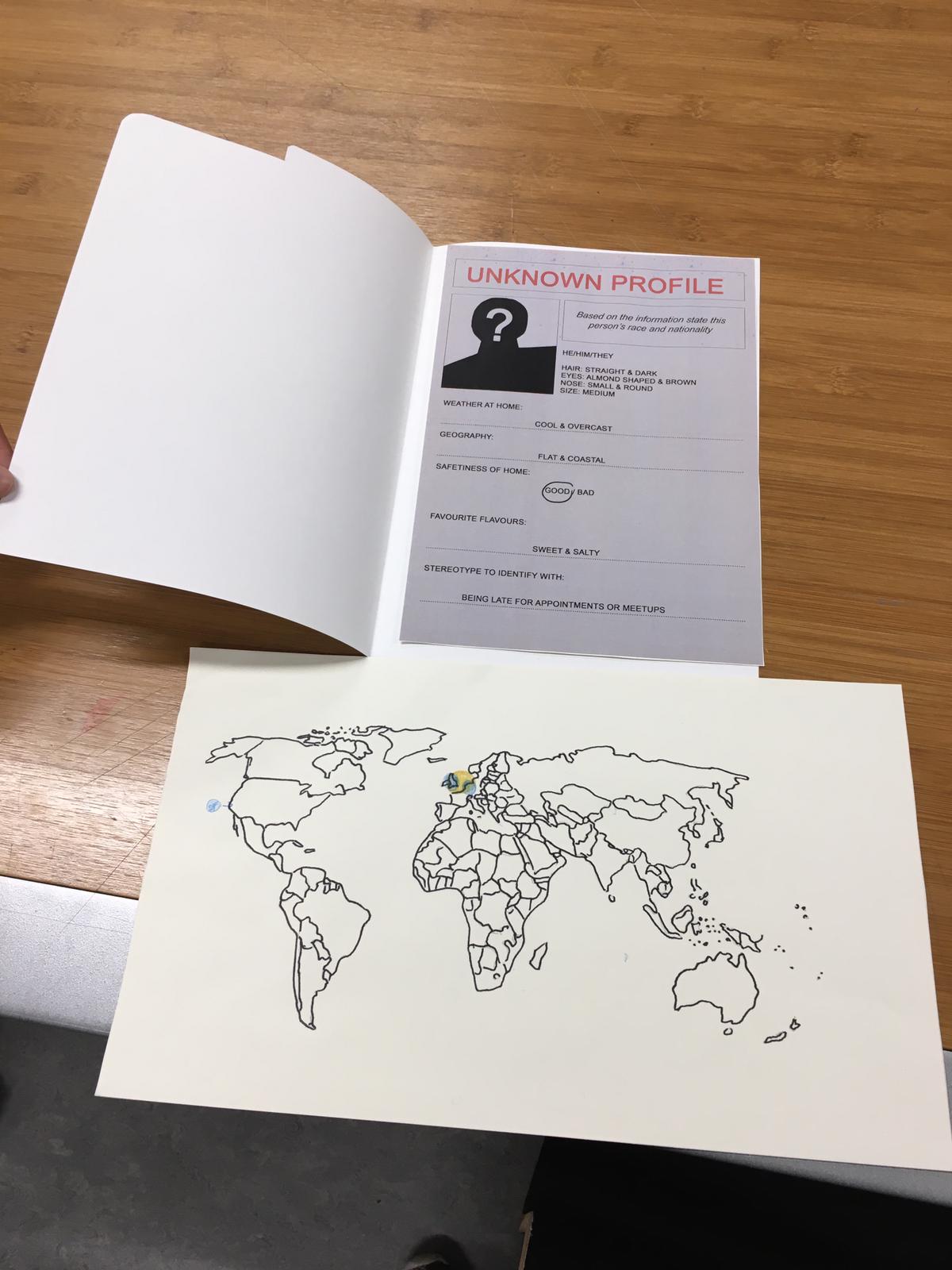Lorenzo Bacchin
Module B
Hayfaa and Pablo
BACK
Theory Assignment
Topic: Race
Practical Assignment
Topic: Race
A selection of 10 quotes from 10 different texts proposed during classes.
1. “And you know what? This part is really important: It’s not your fault.
It’s not your fault, and there’s no need for “white guilt” because no one is asking you to do anything except just listen, and maybe, open your mind to the possibility that these things exist even if you don’t personally see them yourself.
And it’s not your fault because this is just what folks like me were taught growing up, especially in the south. And we were taught from well- meaning family looking out for our safety who also didn’t know any better, because they had grown up being modeled to and taught on the bedrock of racism — especially in the sense that media, advertising and images, history, and stories of their time helped perpetuate all the racist tropes during their formative years.”
- Martie Sirois
2. “But while contemporary Black-produced popular culture brings broader visibility to Black life and history, more often than not its emphasis centers on the depiction of Black people and communities, while maintaining existing limitations of traditional ways of narrating the Black experience. Although it often proceeds from a Black point of view, its major accomplishment is frequently that and that alone. It adds an additional perspective — a Black perspective — but it doesn’t necessarily challenge the fundamental premise of the existing framework for viewing Blackness. It does not challenge the fundamental disparity that defines the dominant viewing practice: the fact that Blackness is the elsewhere (or nowhere) of whiteness.”
- Tina M. Campt
3. “This seems to be the crux of the matter. White people don’t have to use racemoji or risk denying their identity, as Mukerjee does; the default works fine. Perhaps the squeamishness on the part of whites has more to do with the acknowledgement that only white people hold this special privilege; to use the white emoji is to express a solidarity with people of color that does not exist.”
- Andrew McGill
4. “The image is used as a metric for skin-color balance, which technicians use to render an image as close as possible to what the human eye recognizes as normal. But there’s the rub: With a white body as a light meter, all other skin tones become deviations from the norm.
This explains why the portrait session McFadden’s mom set up in a shopping mall studio chain yielded results so disastrous that McFadden instinctively gravitated toward black-and-white when she started taking pictures. Grayscale did a much better job of suggesting the wide variety of multicultural skin tones than existing color film.”
- Ayun Halliday
5. “Come in, take a look, the trailer says to an abstract and amorphous “you”: somebody able to determine who is and is not “nobody.” But this distinction is conditioned upon a particular narrative set forth at the expense of others: these nobody somebodies have to be extraordinary, charismatic, and sensational. The camera doesn’t like the boring, darling.”
- Marcos Gonzales
6. “What does it mean— for those persons whose bodies are most often subjected to the will, desire, and violence of others—to imagine embodiment in a way that’s not yoked to servitude or to violence?”
- Saidiya Hartman
7. “Socially engaged art functions by attaching itself to subjects and problems that normally belong to other disciplines, moving them temporarily into a space of ambiguity.”
- Pablo Helguera
8. “I would go to networking events that were full of guys who had a way of talking I found exhausting,” she says. “Quite bullish, lots about sport. You find yourself feeling you have nothing to say. It’s a vicious circle where your confidence gets diminished if people don’t listen to you.”
- Susanna Rustin
9. “People often want you to be someone you are not.”
- Rosalyn Fraad Baxandall
10. “The way light keeps its shadow by swallowing it.”
- Ocean Vuong
Works Cited
Sirois, Martie. “My Fellow White People: This Is What’s Meant By ‘White Privilege.’” Medium, 22 April 2019, martiesirois.medium.com/my-fellow- white-people-this-is-whats-meant-by-white-privilege-1b780e1328aa.
Campt, Tina M. “How Black Artists Are Shaping a Distinctly Black Gaze.” Hyperallergic, 22 August 2021, hyperallergic.com/671547/how-black- artists-are-shaping-a-distinctly-black-gaze-tina-m-campt.
McGill, Andrew. “Is It Okay to Use White Emoji?” The Atlantic, 6 May 2016, www.theatlantic.com/politics/archive/2016/05/white-people- dont-use-white-emoji/481695.
Halliday, Ayun. “Color Film Was Designed to Take Pictures of White People, Not People of Color: The Unfortunate History of Racial Bias in Photography (1940–1990).” Open Culture, 2 July 2018, www.openculture.com/2018/07/color-film-was-designed-to-take- pictures-of-white-people-not-people-of-color.html.
Gonzales, Marcos. “Paris Doesn’t Always Have To Be Burning”, Public Books, 14 September 2020, https://www.publicbooks.org/paris-doesnt- always-have-to-be-burning/.
Hartman, Sadiya. “On Insurgent Histories And The Abolitionist Imaginary”, Art Forum, 14 July 2020, https://www.artforum.com/ interviews/saidiya-hartman-83579.
Helguera, Pablo. “Education for Socially Engaged Art: A Materials and Techniques Handbook.” Jorge Pinto Books, 2011.
Rustin. Susanna, “If Women Built Cities, What Would Our Urban Landscape Look Like.” The Guardian, 5 Dec. 2014, www.theguardian.com/cities/2014/dec/05/if-women-built-cities-what- would-our- urban-landscape-look-like.
Baxandall, Rosalyn Fraad, “Dear Sisters: Dispatches From The Women’s Liberation Movement.” Basic Books, 2001.
Vuong, Ocean. Night Sky with Exit Wounds, Copper Canyon Press, Port Townsend, WA, 2019

What does it mean to not feel a sense of belonging to the race you've been assigned at birth or to your nation?
How can we keep talking about racial inequalities without dismissing mixed origins and nationalities?
In this social experiment we asked participants to try defining the race of the subject by giving away only a few datas that are usually associated with stereotypes, like hair colour, eyes shape and safety of home town.
In the end we revealed the identity of the person, being him one of our classmates with a difficulty to define his sense of belonging (born in Philippines, emigrated and lived in the Middle East and now living in the Netherlands).